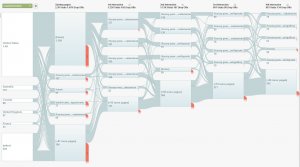Hi all...im going to throw my two cents into the ring having read all of your interesting feedback. Being as I won this bet (thats right Clint!) I think that its earned me some "last word" privledges

In all seriousness, just hear me out...
Just like everything else in this business, this topic is complex. There are tons of variables and considerations and everyone that has chimed in has made excellent points, observations and suggestions. My point is this...there is no "right" answer. Furthermore, what is "right" today likely will change tomorrow. The thread started with a question- can we determine tangible ROI via social. And that answer is yes. However, does that mean that social is king and everything else should be prioritized behind it? NO.
The biggest problem that we face as an industry when it comes to answering these questions is the fragmentation of technologies and the subsequent enormous industry of products, services and voices that serve the conflicting interests of giving opinions, and then profiting from them. In my opinion, the answer is to continue to do what this thread is doing....try things, measure the results, pivot based on tangible results. Just because we prove X strategy works doesnt mean Y needs to be abandoned. Having a wide breadth, or "portfolio" of advertising isnt a bad thing- so long as its measured and managed. I will end on this note....both Google and Facebook are powerful and when structured for tangible return, can do so. The bigger takeaway from this is the tools for measuring those returns. In the case of FB- yes, you have to pay. You also have to align your ROI with the strategy. If leads-to-sales is the goal, format AD's appropriately and funnel them into a ADF format that ensures they become tangible. If awareness/branding is your strategy- then realize that you still have to pay, but the measurement tool shifts to clicks, impressions and user flows.
User flows bring me to my next point- Google Analytics is a tremendous tool- use it. There isnt anything that cant be learned on youtube or asking on the forum...but typically the vendors "teaching" us have too much skin in the game and arent point our eyes in the right direction. User Flow is rarely mentioned in automotive and yet the rest of the retail world lives off of it. For those not familiar, I have attached a picture of how it looks in GA (google image rip, no clue what industry or site its showing but you get the point). These flows give a clear and verifiable picture as to how the users, once on your site, behave...when they leave, where they most likely progress, etc...the story is painted, we just need to look for it.
Anyways- thanks for listening. This was a fun bet and I enjoyed it. Ironically, I probably got more out of it than Clint. I can do this nonsense all day long...but I struggle to source pre-owned cars that move. I cant tell you how much Clint has helped me in this regard and how thankful I am for that help. Thats what this forum is about...driving the industry forward by leveraging the power of community. Have a great day.










